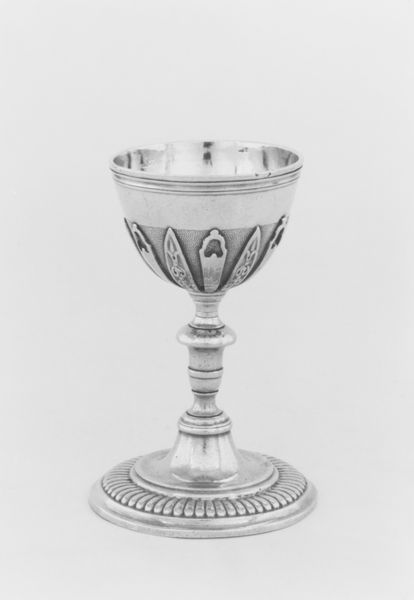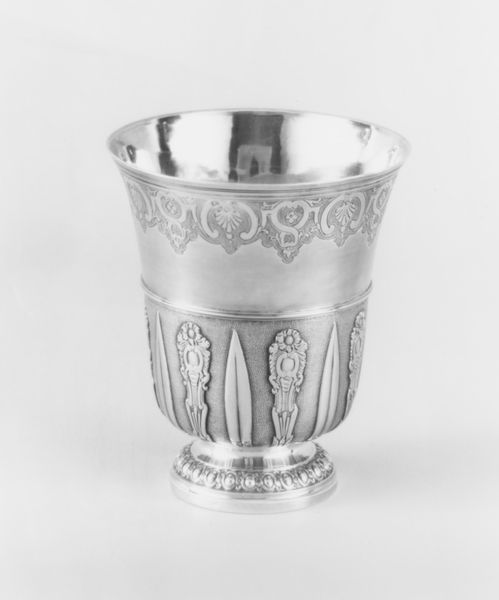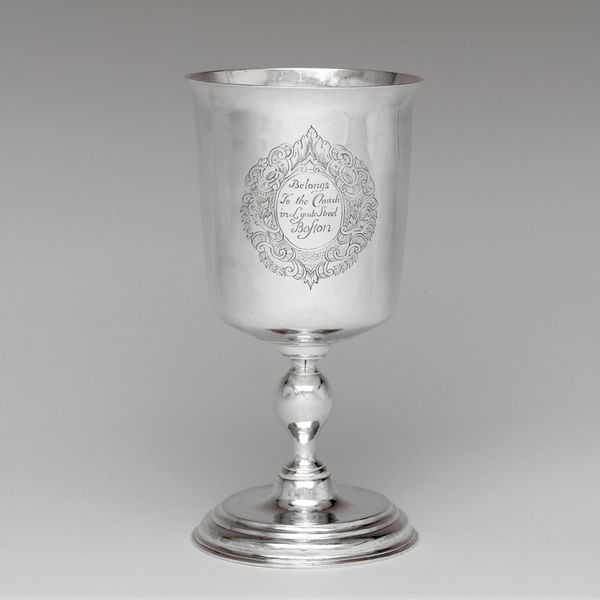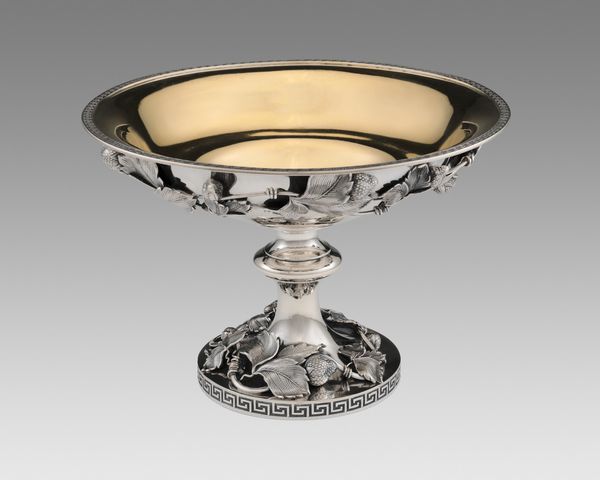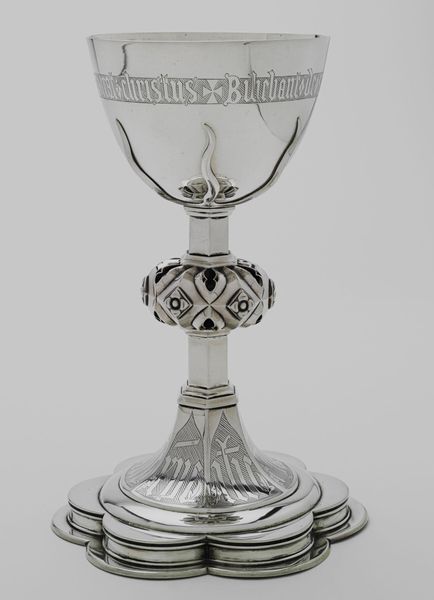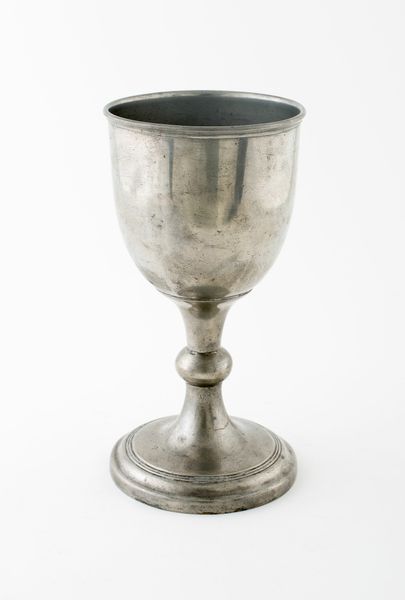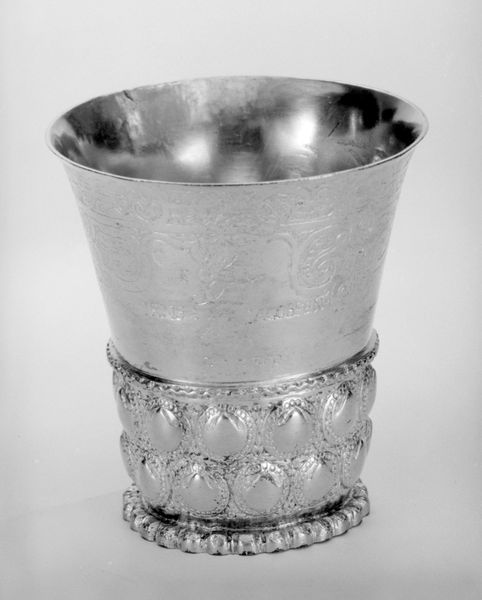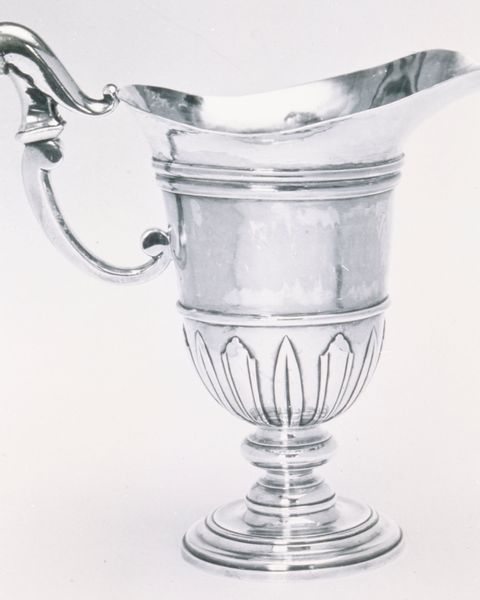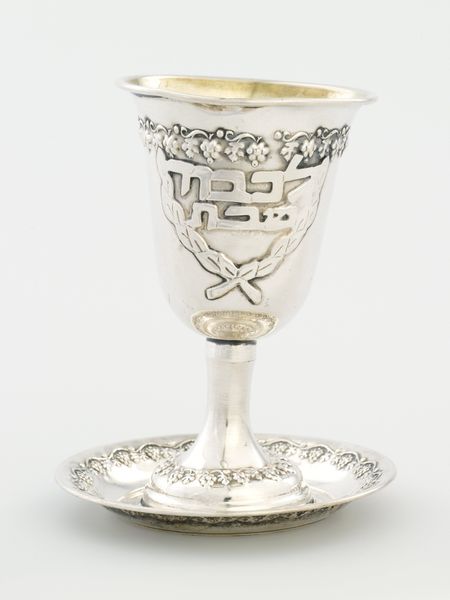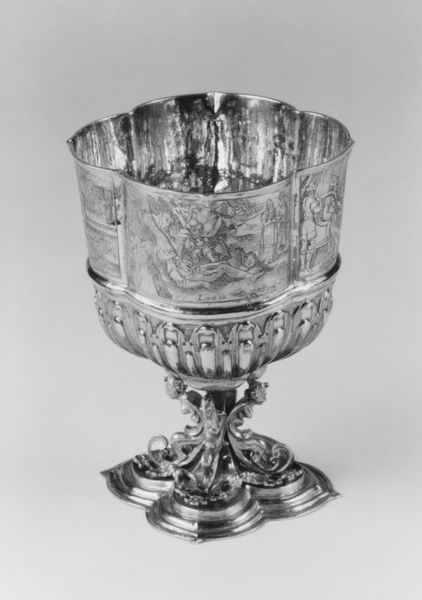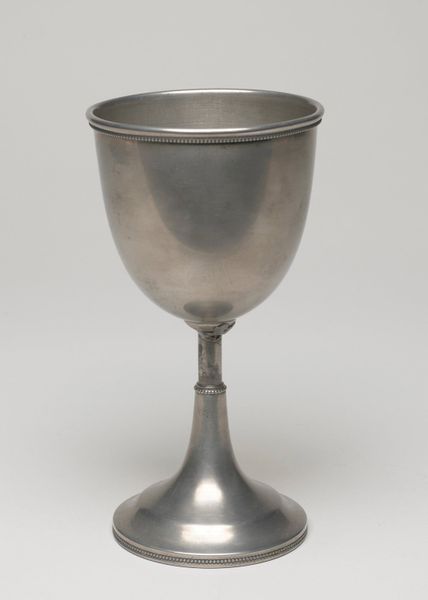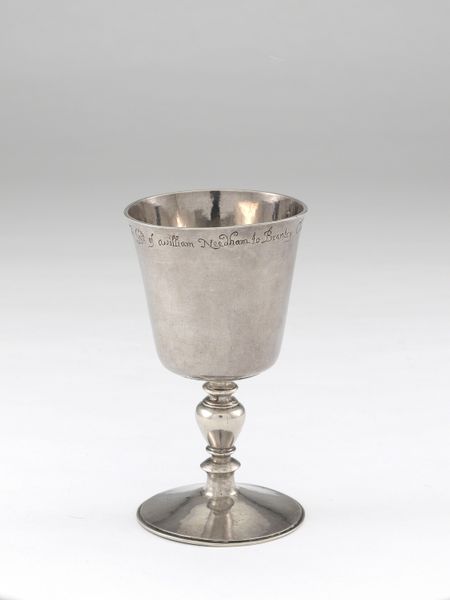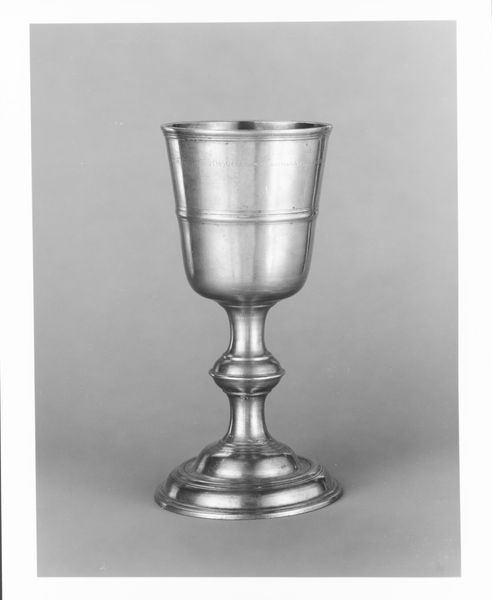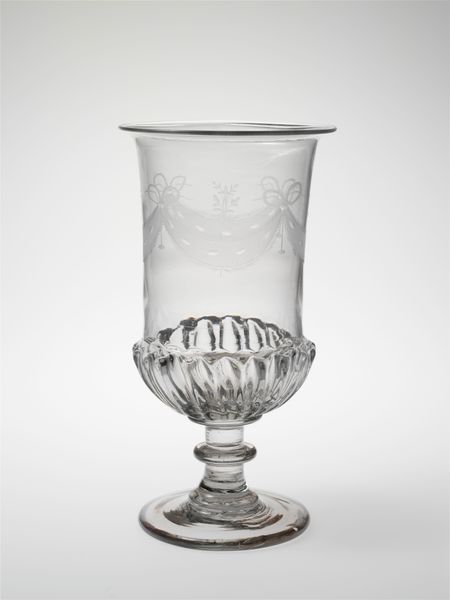
silver, metalwork-silver, sculpture
#
product studio photography
#
silver
#
3d printed part
#
culinary art
#
appetizing
#
metalwork-silver
#
food illustration
#
stoneware
#
wash background
#
sculpture
#
product photography
#
food photography
#
recipe
#
decorative-art
#
arm
Dimensions: Height: 3 3/8 in. (8.6 cm)
Copyright: Public Domain
Curator: Immediately I think, what a stark little beauty! A somewhat austere elegance defines this petite silver egg cup. Editor: Indeed. This piece, made of silver by Robert Mothé, dates from 1721 to 1722. It’s currently held at the Metropolitan Museum of Art. What's so appealing for you? Curator: The cool gleam, the echoing motifs running from base to lip. Silver’s reflective surface historically served to purify and protect—warding off illness, deflecting negative energies. One eats from this object with intent. Editor: Right. Eating, like most daily life activities for the privileged in the 18th century, had symbolic value. The form reflects the broader social and political context of elite European society at the time. Consider the rise of mercantilism and colonialism that made objects like this—and the commodities they contained, like eggs—symbols of global power dynamics and wealth. Curator: I'm thinking of that period’s intense focus on refined living and natural philosophy. I believe the choice of egg, as an object for display and consumption, signals nascent understandings of life cycles and renewal. Eating from something egg-shaped from precious material feels like communing with the origins of existence. Editor: Yes, and in these cases, it's worth questioning who had access to this particular communion? Was it meant for individual use or was its main value to participate in rituals of bourgeois affirmation? Even seemingly innocent decorative art can point toward existing patterns of inequity. Curator: That’s well-taken. Still, when considering Mothé’s work, I notice a quiet resonance between classical form and domestic function. Editor: I see it differently: while functional, pieces like this were designed primarily as symbols of affluence, showcasing global connections but obscuring colonial realities. Curator: Perhaps. Though considering this delicate piece, I choose to see its inherent visual power beyond simple historical categorizations. Editor: And that's precisely where historical inquiry can enrich visual enjoyment, for me at least. Thank you, as always, for sharing your symbolic sight. Curator: Thank you. The pleasure of shared contemplation and varied viewpoints has been all mine.
Comments
No comments
Be the first to comment and join the conversation on the ultimate creative platform.
